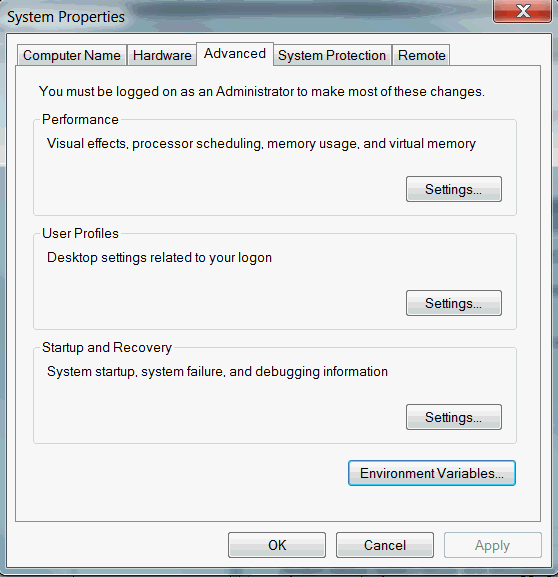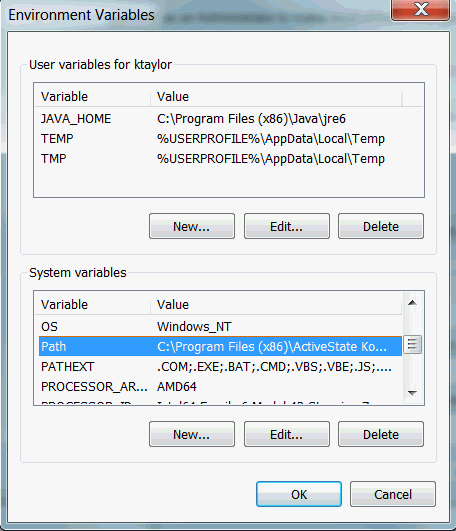7.8 Create and Modify Environment Variables on Windows
If the PATH, ORACLE_SID, and
ORACLE_HOME environment variables do not exist, you must create
them.
Assign the values specified in Figure 7-2. On Windows systems, you must be an administrator to create or modify environment variables.
To create or modify environment variables on Windows 10:
-
-
On the Windows taskbar, right-click the Windows icon and select System.
-
In the Settings window, under Related Settings, click Advanced system settings.
Figure 7-1 Advanced System Settings in Windows

Description of "Figure 7-1 Advanced System Settings in Windows" -
On the Advanced tab, click Environment Variables.
Figure 7-2 Environment Variables Dialog in Windows

Description of "Figure 7-2 Environment Variables Dialog in Windows" -
Click New to create a new environment variable. Click Edit to modify an existing environment variable.
Note:
Click New to modify either the user variables or system variables. If the users accessing the Windows server use the same version of R and/or Oracle Database, modify system variables. If the users accessing the Windows server use different versions of R and/or Oracle Database, modify the user variables. - After creating or modifying the environment variable, click Apply and then OK to have the change take effect.
-
Note:
The graphical user interface for creating environment variables may vary slightly, depending on your version of Windows.
Parent topic: Administrative Tasks for Oracle Machine Learning for R